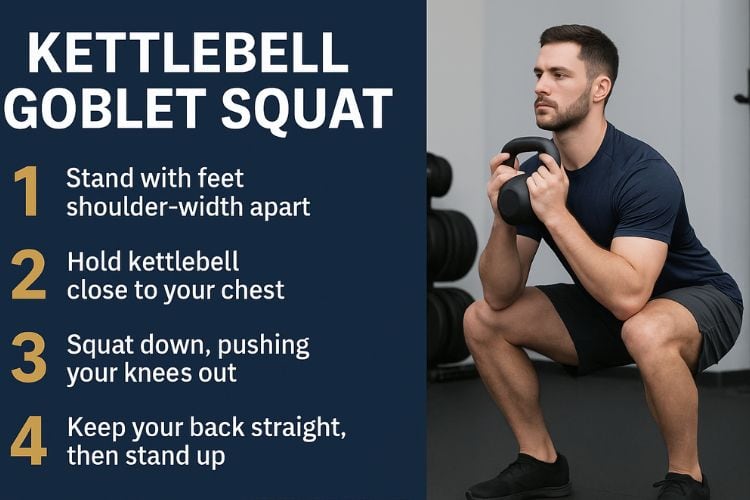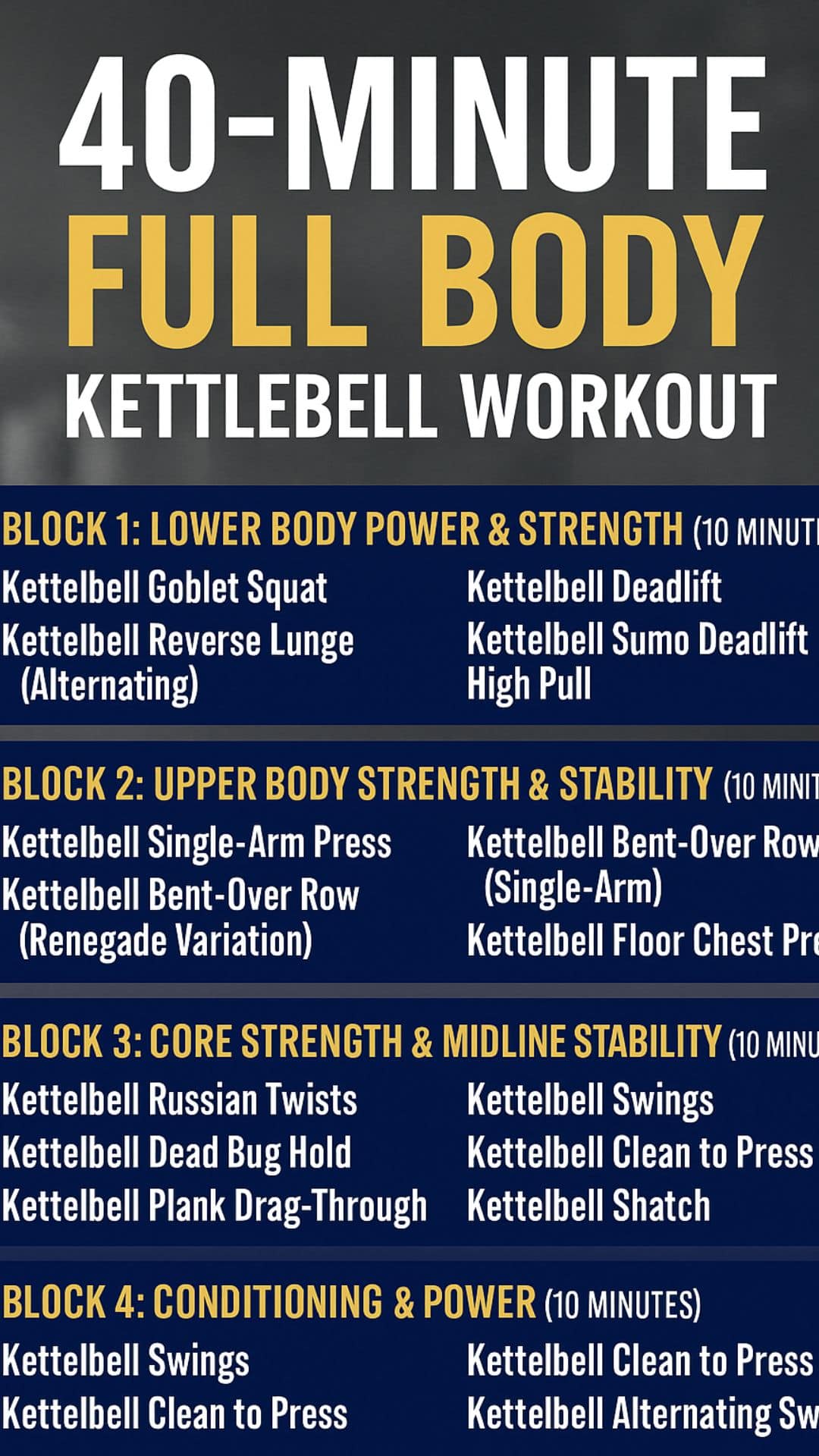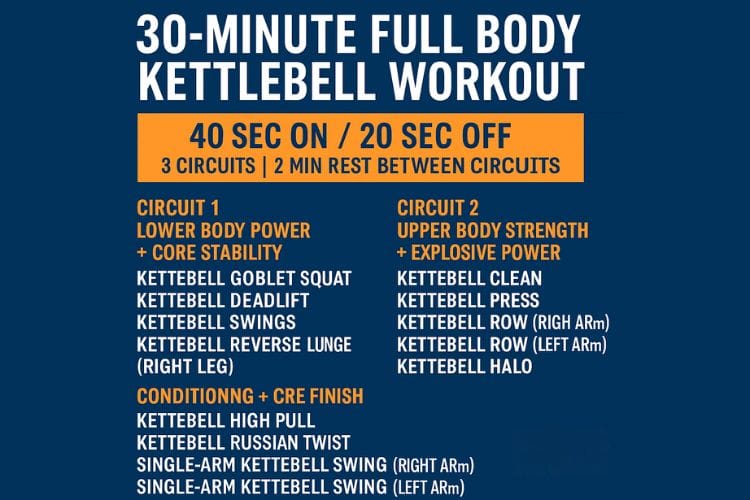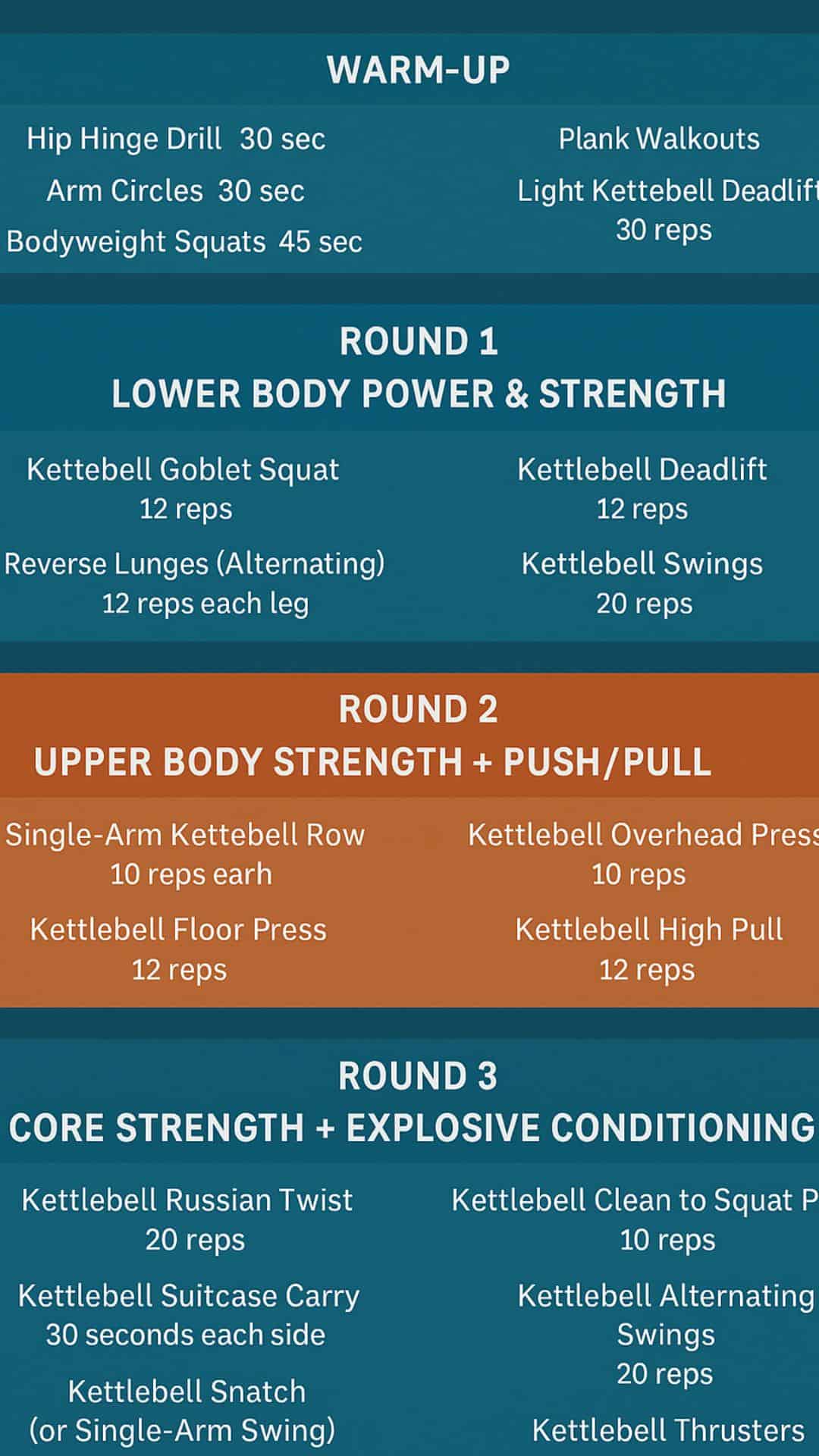
45 Minutes to Fit: A Full-Body Kettlebell Workout for All Levels

40-Minute Full-Body Kettlebell Workout (Build Muscle, Burn Fat)

30-Minute Kettlebell Workout for Total-Body Strength

25-Minute Full Body Kettlebell Workout for Strength & Fat Loss
Box Squat An Essential Powerlifting Technique

When it comes to building lower body strength, improving athletic performance, and enhancing overall fitness, few exercises are as effective as the box squat. This versatile movement is a staple in powerlifting, strength training, and functional fitness programs. Whether you’re a beginner or an experienced lifter, incorporating box squats into your routine can help you break through plateaus, improve form, and achieve your fitness goals. In this comprehensive guide, we’ll dive deep into the world of box squat workouts, exploring their benefits, proper techniques, and tips for maximizing your results.
What Are Box Squats?
Box squats are a variation of the traditional squat exercise that involves lowering your body until you’re seated on a box or bench, then standing back up. The box serves as a guide to ensure proper depth and form, making it an excellent tool for beginners and advanced lifters alike. Unlike regular squats, box squats emphasize the posterior chain—including the glutes, hamstrings, and lower back—while reducing stress on the knees.
Key Features of Box Squats:
- Controlled Movement: The box forces you to pause at the bottom of the squat, eliminating momentum and requiring you to rely on pure strength to stand back up.
- Depth Consistency: The box ensures you hit the same depth every time, which is crucial for building strength and avoiding injuries.
- Versatility: Box squats can be performed with barbells, dumbbells, kettlebells, or even just your body weight.
Benefits of Box Squat Workouts
Box squats offer a wide range of benefits that make them a valuable addition to any fitness routine. Here are some of the top advantages:
1. Improved Strength and Power
Box squats are a powerhouse exercise for building lower body strength. By eliminating the stretch reflex (the bounce at the bottom of a traditional squat), box squats force your muscles to work harder to lift the weight. This increased effort translates to greater strength gains over time. Additionally, the pause at the bottom helps develop explosive power, which is essential for athletes in sports like football, basketball, and track and field.
2. Enhanced Technique and Form
For many lifters, maintaining proper form during squats can be challenging. The box acts as a guide, ensuring you reach the correct depth and maintain an upright torso. This makes box squats an excellent tool for teaching proper squat mechanics and preventing common mistakes like leaning too far forward or not going deep enough.
3. Reduced Risk of Injury
Because box squats place less stress on the knees compared to traditional squats, they’re a safer option for individuals with knee issues or those recovering from injuries. The controlled movement also reduces the risk of overloading the joints, making it a great choice for lifters of all ages and fitness levels.
4. Targeted Muscle Activation
Box squats place a greater emphasis on the posterior chain, including the glutes, hamstrings, and lower back. This makes them an excellent exercise for addressing muscle imbalances and improving overall lower body development.
5. Mental Focus and Discipline
The pause at the bottom of the box squat requires mental focus and discipline, as you must remain tight and controlled throughout the movement. This can help improve your mind-muscle connection and make you a more mindful lifter.
How to Perform Box Squats with Proper Form
To reap the full benefits of box squats, it’s essential to perform them with proper form. Here’s a step-by-step guide to mastering the movement:
Step 1: Set Up the Box
Choose a box or bench that allows you to squat to parallel or slightly below (where your thighs are parallel to the ground). The height of the box will depend on your flexibility and goals. Beginners may want to start with a higher box and gradually work their way down.
Step 2: Position the Barbell
Place the barbell on a squat rack at shoulder height. Step under the bar and position it across your upper back (for high-bar squats) or lower traps (for low-bar squats). Grip the bar firmly and unrack it by straightening your legs.
Step 3: Assume the Starting Position
Step back from the rack and position your feet slightly wider than shoulder-width apart, with your toes pointed slightly outward. Engage your core, keep your chest up, and maintain a neutral spine.
Step 4: Lower Yourself to the Box
Begin the descent by pushing your hips back and bending your knees. Keep your weight on your heels and avoid letting your knees cave inward. Lower yourself until you’re seated on the box, ensuring your thighs are parallel to the ground or lower.
Step 5: Pause and Stand Up
Pause briefly on the box without relaxing your muscles. Drive through your heels to stand back up, extending your hips and knees simultaneously. Keep your chest up and maintain a tight core throughout the movement.
Step 6: Repeat
Perform the desired number of repetitions, focusing on maintaining proper form and control.
Common Mistakes To Avoid
While box squats are a highly effective exercise, they can lead to injuries or suboptimal results if performed incorrectly. Here are some common mistakes to watch out for:
1. Rounding the Back
Rounding your back during box squats can place excessive stress on your spine and increase the risk of injury. To avoid this, keep your chest up and maintain a neutral spine throughout the movement.
2. Bouncing Off the Box
Using momentum to bounce off the box defeats the purpose of the exercise. Instead, pause briefly on the box to eliminate the stretch reflex and focus on controlled movement.
3. Knees Caving Inward
Allowing your knees to cave inward can strain the knee joints and reduce the effectiveness of the exercise. Focus on pushing your knees outward as you stand up.
4. Incorrect Box Height
Using a box that’s too high or too low can compromise your form and limit your progress. Choose a box that allows you to squat to parallel or slightly below.
Tips for Maximizing Your Box Squat Workouts
To get the most out of your BS workouts, consider the following tips:
1. Start Light and Focus on Form
If you’re new to box squats, start with a light weight or just your body weight to master the movement. Gradually increase the load as you become more comfortable with the exercise.
2. Incorporate Variations
Mix up your box squat routine by incorporating variations like front BS, goblet box squats, or box squats with resistance bands. This can help prevent plateaus and keep your workouts interesting.
3. Use Tempo Training
Tempo training involves controlling the speed of your movements. For example, you could lower yourself to the box for 3 seconds, pause for 2 seconds, and stand up for 1 second. This can increase time under tension and enhance muscle growth.
4. Pair with Accessory Exercises
Complement your box squats with accessory exercises like Romanian deadlifts, hip thrusts, and lunges to target the posterior chain and improve overall lower body strength.
5. Prioritize Recovery
Box squats are a demanding exercise, so it’s important to prioritize recovery. Get adequate sleep, fuel your body with nutritious food, and incorporate stretching or foam rolling into your routine.
Sample Box Squat Workout Plan
Here’s a sample workout plan to help you incorporate BS into your routine:
Warm-Up:
- 5-10 minutes of dynamic stretching or light cardio
- Bodyweight squats: 2 sets of 10-12 reps
- Glute bridges: 2 sets of 12-15 reps
Main Workout:
- Barbell box squats: 4 sets of 6-8 reps
- Romanian deadlifts: 3 sets of 8-10 reps
- Hip thrusts: 3 sets of 10-12 reps
- Walking lunges: 3 sets of 12-15 reps per leg
Cool-Down:
- Static stretching: Focus on the quads, hamstrings, glutes, and lower back
- Foam rolling: Spend 5-10 minutes rolling out tight muscles
Box squats are a highly effective exercise for building lower body strength, improving technique, and reducing the risk of injury. By incorporating them into your workout routine and following the tips outlined in this guide, you can take your fitness to the next level. Whether you’re a powerlifter, athlete, or fitness enthusiast, BS offer a challenging and rewarding way to achieve your goals. So grab a box, load up the barbell, and start squatting your way to a stronger, healthier you!
Most Recommended
Subscribe to our Newsletter
Stay up to date on the latest men’s health, fitness and lifestyle trends and tips.
About Us
Men’s Fit Club was started with the goal of empowering men to get the most out of their lives. This meant going beyond exercise and diet tips to really address the broad range of issues that men face on a daily basis – topics like recreation, finding love, sexual health and even sound fashion advice.
Quick Links
© COPYRIGHT MEN'S FIT CLUB 2025. All Rights Reserved

